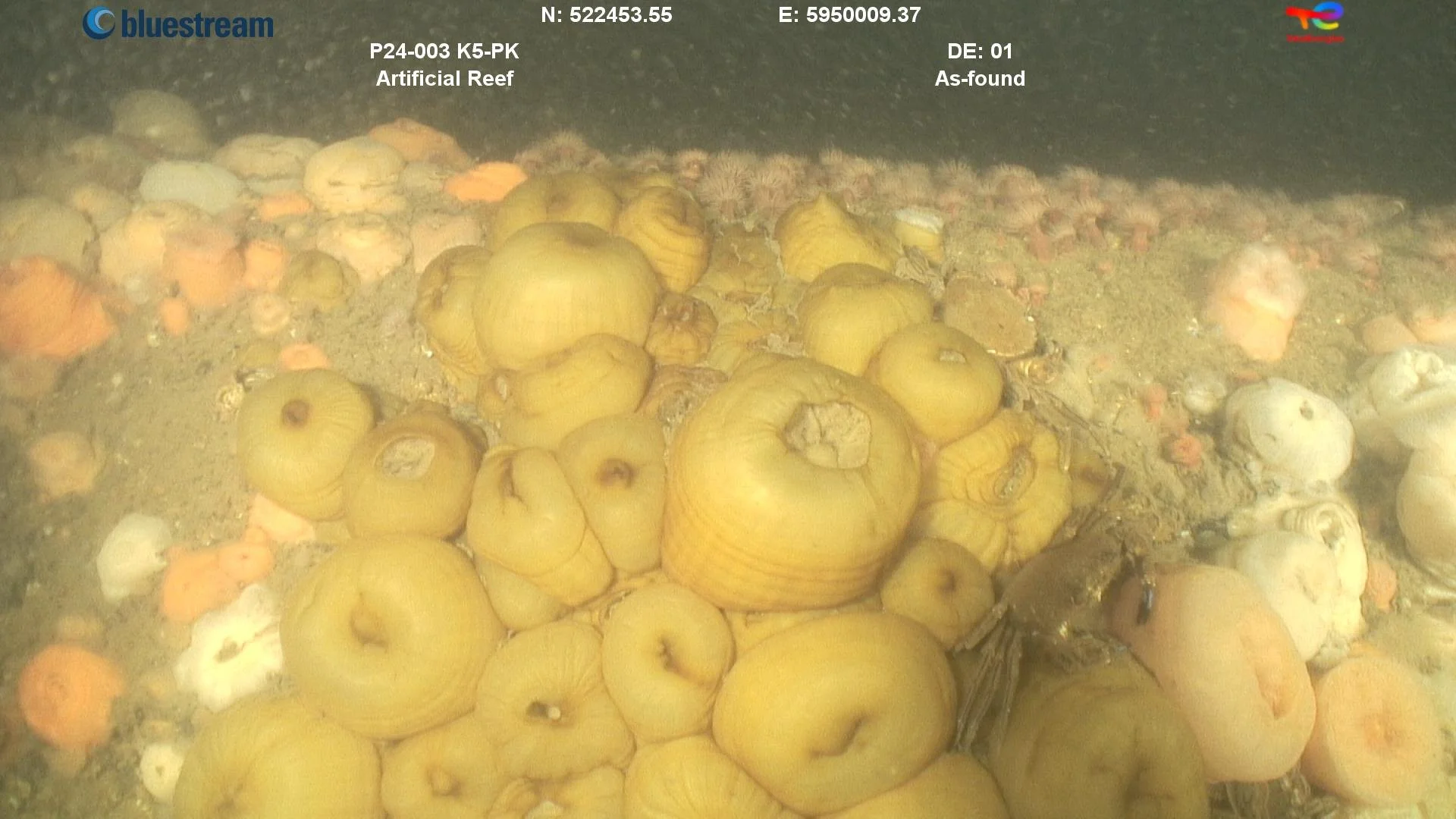ROV surveys of our Bespoke, Artificial Reefs
Following the deployment at an offshore energy site, the Living Windfarms Project in collaboration with TotalEnergies and The Rich North Sea have undertaken baseline biodiversity surveys.
Remotely Operated Vehicle (ROV) surveys were undertaken at the site to characterise the marine species currently present. The primary objective of these surveys was to understand the marine life currently present, so that we can determine the impact of the artificial reefs on local biodiversity over the coming years.
Alongside routine maintenance work, TotalEnergies’ work-class ROV was deployed to survey both the foundations of the platform and the surrounding seabed. The footage collected will be meticulously analysed by specialist marine ecologists, to compile a comprehensive species list.
Early results of this survey revealed that the platform is already home to a wide variety of species. Notable species observed from the seabed surveys included the Common dab (Limanda limanda), Common dragonet (Callionymus lyra), Pouting (Trisopterus luscus), Grey gurnard (Eutrigla gurnardus), and European lobster (Homarus gammarus).
In addition to surveying these more mobile species, examination of the marine growth on the jacket is crucial for predicting which species are likely to settle on the artificial reef units. The footage from this survey showcases a diverse array of marine life, including barnacles, sponges, and anemones, as well as swimming crabs and lobsters taking refuge around the structure. This information will be very valuable in understanding how the artificial reefs can enhance local ecosystems and support marine biodiversity.
It is also worth noting that from both the seabed and jacket leg surveys, neither Atlantic cod (Gadus morhua), nor Ross worm (Sabellaria spinulosa), two of the target species of the artificial reefs, were observed at the site during the initial baseline assessment. It will be fascinating to see how the community of species present at the artificial reef evolves over the project lifetime.
Through these surveys, the project aims to establish a baseline for future comparisons, ultimately contributing to the successful implementation and monitoring of artificial reefs in the region.
Get in touch to find out how we can help you to monitor the impact of your project

